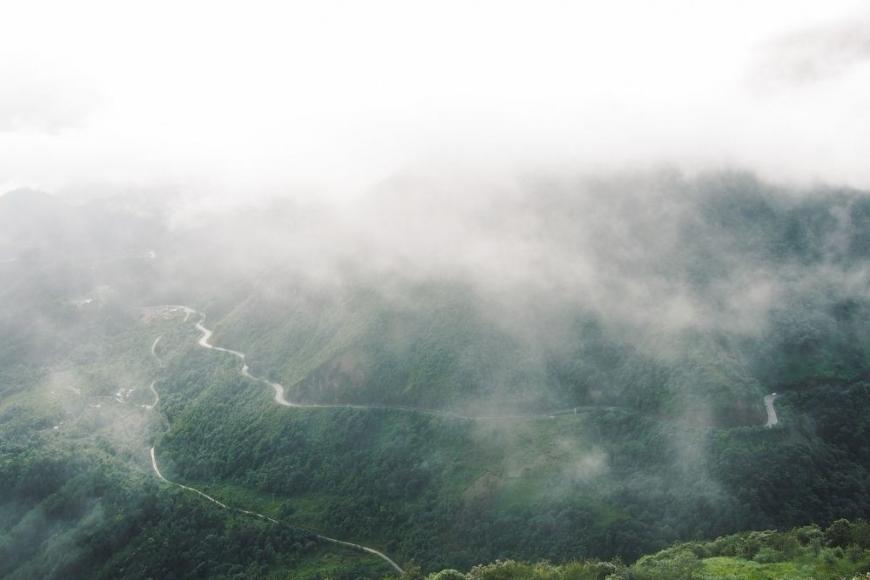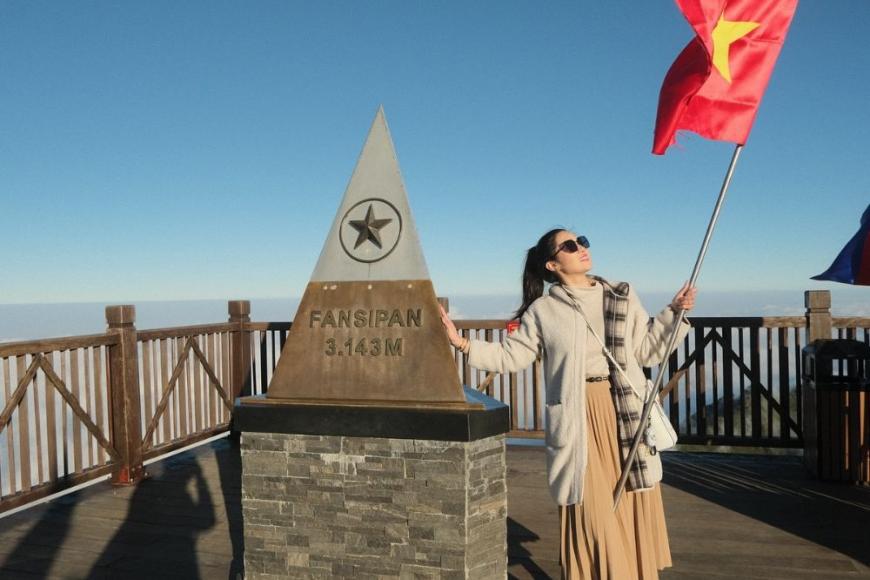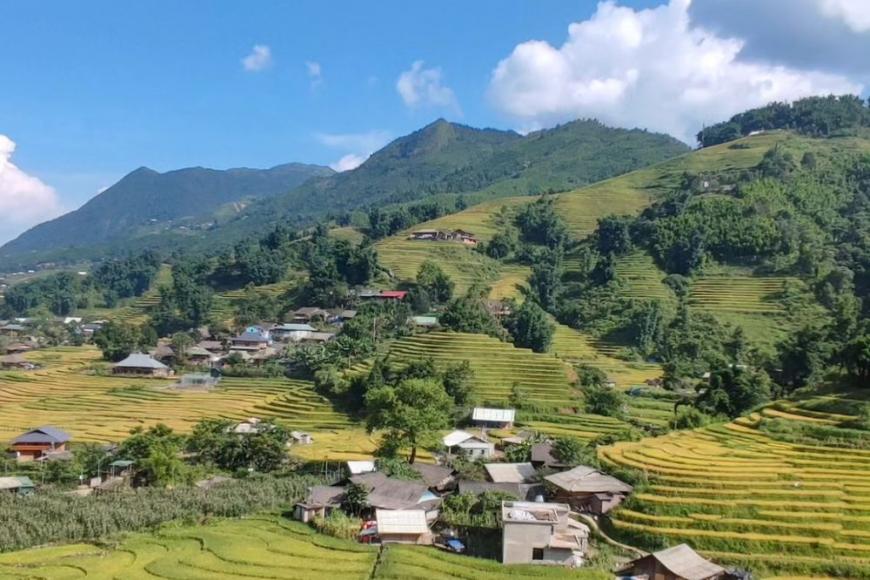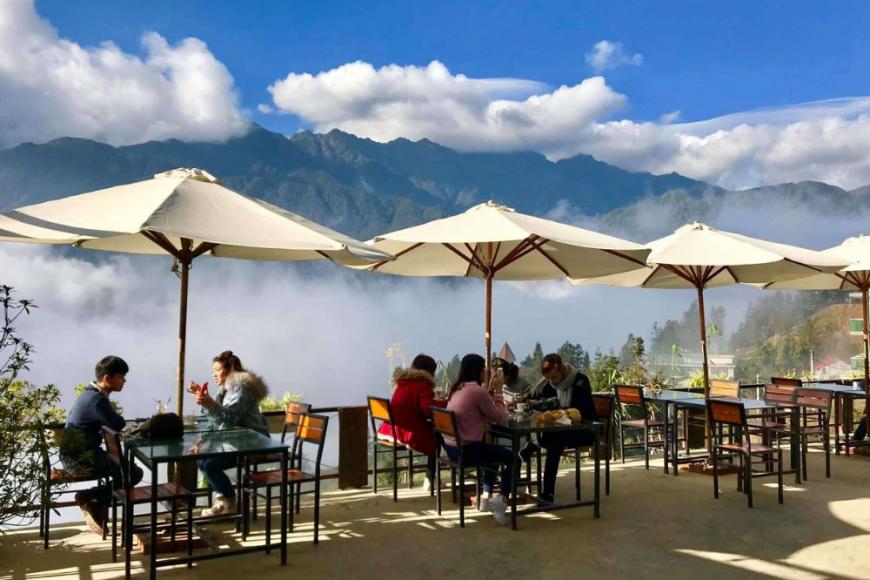- Nha Trang Travel Information
- Muine Travel Information
- Hue Travel information
- Cantho travel information
- Sapa travel information
- Ha Giang Travel Guide
- Ninh Binh Travel Information
- Quy Nhon Travel Information
- Vietnam Travel Information
- Hoian Travel Guide
- Vung Tau Travel Information
- Quang Binh Travel Information
- Phu Quoc Travel Information
- Ha Tinh Information
- Ca Mau information
- Quang Ninh Travel Information
- Tay Ninh Travel information
- Hoian travel guide
- Tien Giang travel guide
- Con Dao Travel information
- Ninh Thuan information
- Moc Chau information
- Danang Vietnam Travel Information
- Hanoi Travel Information
- Ho Chi Minh Travel Information
- Dalat Travel Information
How To Travel From Sapa To Ha Giang?
Following a vacation to Sapa, a journey to Ha Giang would be a fantastic choice for a destination. In this post, we will explain how to go from Sapa to Ha Giang, the best alternatives for transportation, and the things you should know before visiting to this lovely province in Vietnam.
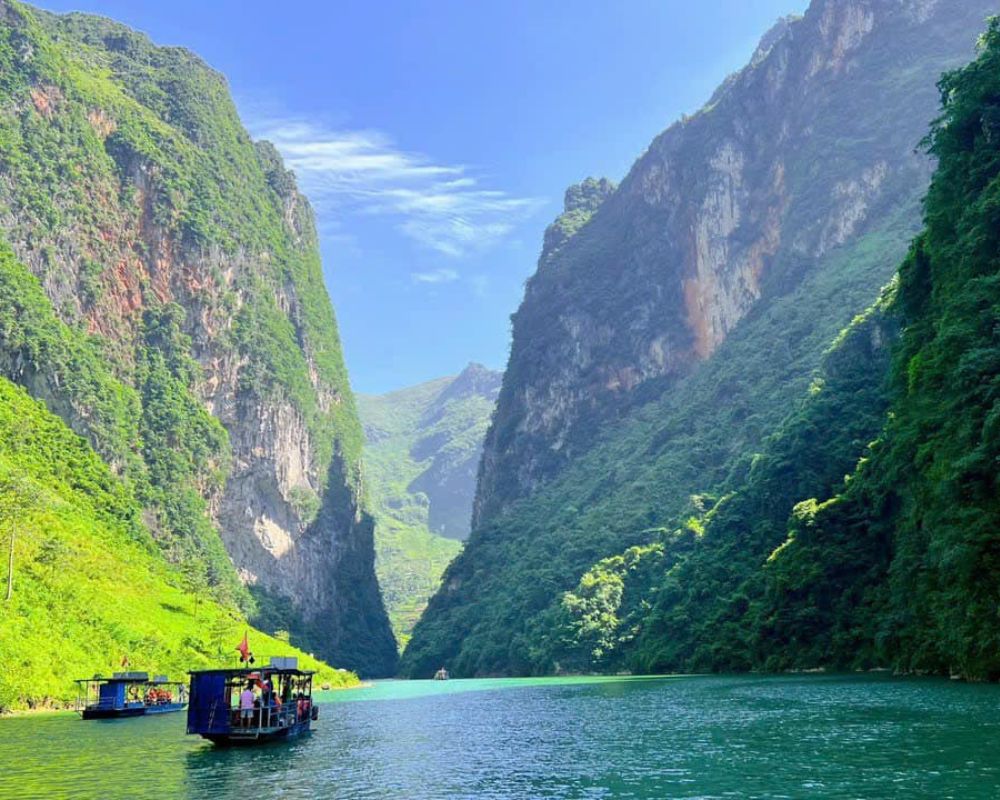
Distance to Ha Giang from Sapa?
When you visit Vietnam, you really cannot leave without spending some time in Sapa. Not only is it renowned for its gorgeous mountains and rice terraces, but it is also recognized for the cultural characteristics of its ethnic people, which you can not easily discover in other parts of Vietnam.
In the north-eastern part of Vietnam is where you'll find the province of Ha Giang. These days, Ha Giang, which is home to the Dong Van Karst Plateau Geopark, has established itself as one of the most popular tourist destinations in all of Vietnam, drawing visitors from all over the globe.
The trip from Ha Giang to Sapa is around 250 kilometers long and takes about six hours to complete.
As a consequence of the mountainous topography, the highways include a great deal of treacherous passes and slopes.
If you leave Sapa for Ha Giang on a day with poor weather, you can encounter severe circumstances like as heavy rain, strong winds, and dense fog. The route is quite steep and icy, and there is a chance that you could come across some landslides.
You will have unique experiences when traveling from Sapa to Ha Giang due to the breathtaking natural environment along the way, which is both magnificent and lyrical.
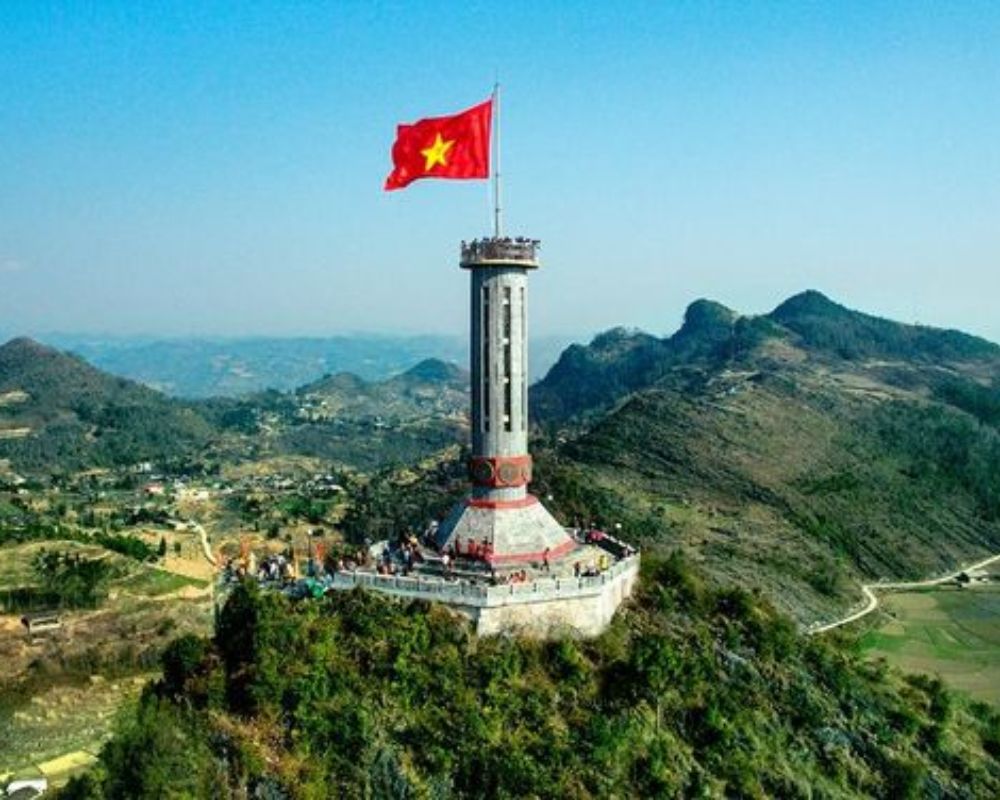
>>> Read more: SAPA TOUR 2 DAYS FROM HANOI
How to get from Sapa to Ha Giang?
Sapa to Ha Giang by bus
If you do not feel comfortable behind the wheel, using a bus is the more prudent mode of transportation.
There are buses that go daily from Sapa to Ha Giang and vice versa, and the trip duration is around 5 hours and 30 minutes. These buses are offered by Grouptour. The price of a ticket on the bus to Ha Giang begins at $11, however this varies based on the seat choices (van or sleeper bus) and the amount of time spent traveling.
| Bus name | Time depart | Price in VND | Phone contact |
| Quang Nghị | Sapa: 10h, 19h30 Hà Giang: 10h, 19h30 |
350.000đ | 091 574 4733 |
| Quang Giang | Sapa: 19h Hà Giang: 20h |
300.000 – 350.000đ | 0378 311 311 |
| Full Moon Party Tour | Sapa: 10h -> 19h40 Hà Giang: 20h |
428.000đ | 0974 426 821 |
| Grouptour | Sapa: 19h30, 19h50 Hà Giang: 20h -> 21h |
425.000đ | 0398 233 171 |
Routes: These buses often go along National Road 2, National Highway 70, and National Highway 279 as their primary routes.
It takes around 5 hours and 30 minutes to go to Ha Giang by bus. Please be aware that the trip time might potentially be somewhat extended owing to the time spent in traffic. On the trip, there can be stops for the restroom and for meals.
Sapa to Ha Giang by motorbike
Renting a motorcycle is a terrific alternative for those who wish to see the Vietnamese countryside and the winding mountain roads while on their vacation in Vietnam. You have the option to hire a motorcycle in Sapa and ride it all the way to Ha Giang if you so want. The trip takes around 6-7 hours, and during that time you will go through some breathtaking scenery, as well as several tiny communities and rice terraces.
The price of hiring a motorcycle varies based on the model of motorcycle, as well as the length of time for which it is rented. Standard motorcycle rentals typically cost between 200,000 and 300,000 Vietnamese Dong (about $8.50 and $13.00 USD) per day. You should also think about how much money you'll need to spend on gas, meals, and lodging along the trip.
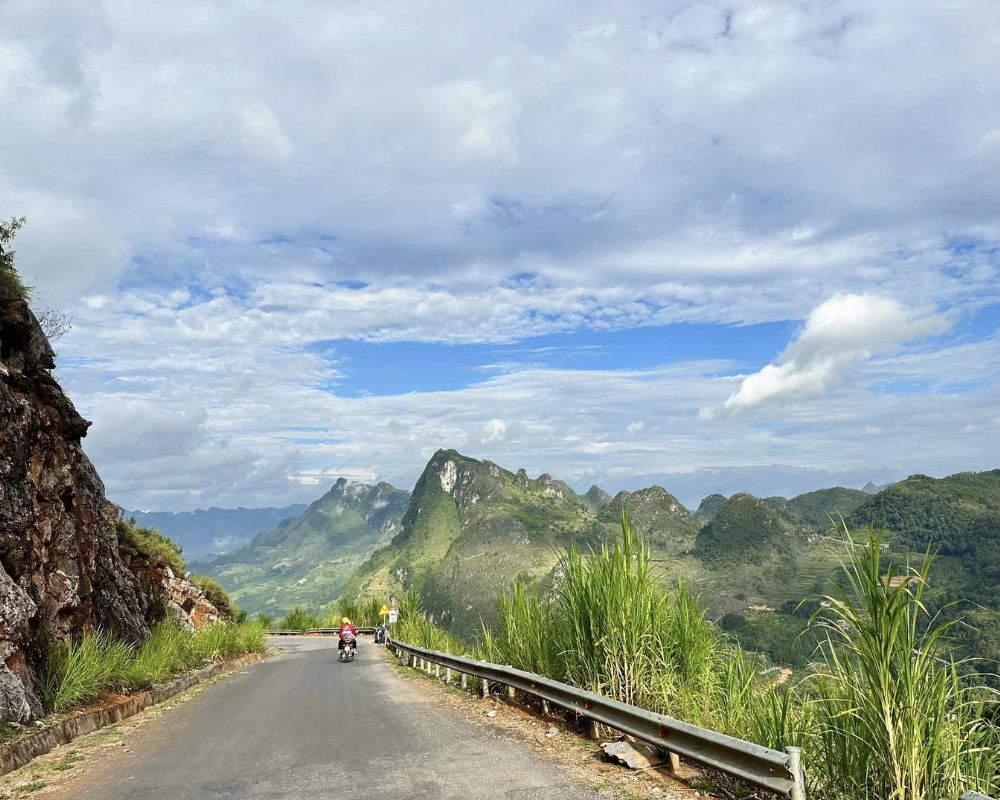
Sapa to Ha Giang by private car
You may rent a private automobile to drive you from Sapa to Ha Giang if you want to travel in complete ease and convenience from one location to the next. The cost of this alternative is more than that of the other means of transportation; nonetheless, it provides greater discretion, luxury, and adaptability. You have the option of renting a vehicle and driving it alone, or you may get a car that comes with a driver.
The price of renting a car together with a driver varies not only with the kind and type of the vehicle but also with the distance traveled and the length of time spent on the road. The one-way trip typically costs between 130 and 170 dollars United States Dollars (or 3-4 million Vietnamese Dong), and it takes around 5-6 hours to complete.
You also have the option to rent a vehicle and drive it yourself, but in order to do so, you will need a valid international driver's license and you will need to be conversant with the laws governing traffic in Vietnam.
| Jouney: Sapa - Ha Giang | Duration | 4 seat | 7 seat |
| Price in US | 4hrs47 minutes | 189 | 199 |
If you want to rent a private car to Ha Giang from Sapa, please visit this website: https://vietnambudgetcarrental.com/sapa-to-ha-giang-by-private-car.html Or contact Vietnam Trust Car Rental thought +84.934.189.301|Whatsapp
The following is some information on your trip to Ha Giang from Sapa that you need to be aware of. Get in touch with us as soon as possible to plan the trip of a lifetime to this breathtaking location.
>>> See more: SAPA TRAVEL TIPS
>>> See more : HANOI TO HA GIANG
Best time to visit Ha Giang, Vietnam
In point of fact, Ha Giang is a gorgeous location any time of the year to pay a visit to. The weather in Ha Giang varies depending on the time of day and the altitude, but there are generally speaking two distinct seasons: the rainy season and the dry season. No matter whether it's spring, summer, autumn, or winter, there are always unique things that draw people to a certain location. You should schedule your trip to Ha Giang around the time of year that is most convenient for you.
Spring in Ha Giang
It's possible that March is the best time to visit Ha Giang. Plum blossoms and peach blossoms both begin to appear in Ha Giang throughout the springtime. White plum blossoms and pink peach followers bloom over the whole province of Ha Giang, Dong Van, and Meo Vac. Assume Ha Giang has woken up after a lengthy nap and is eager to flaunt her attractiveness.
The rainy season ends and the dry season begins in the spring. Temperatures are mild, hovering around the 20s, perfect for hiking. Temperatures in January and February average just around 15 degrees below average. It's freezing out, so bring along some thick clothing and windproof gloves for your motorcycle ride.
Tet holiday, or the Vietnamese Lunar New Year, is celebrated in the springtime. It's a great time to visit Vietnam because of all the exciting local festivities you may participate in.
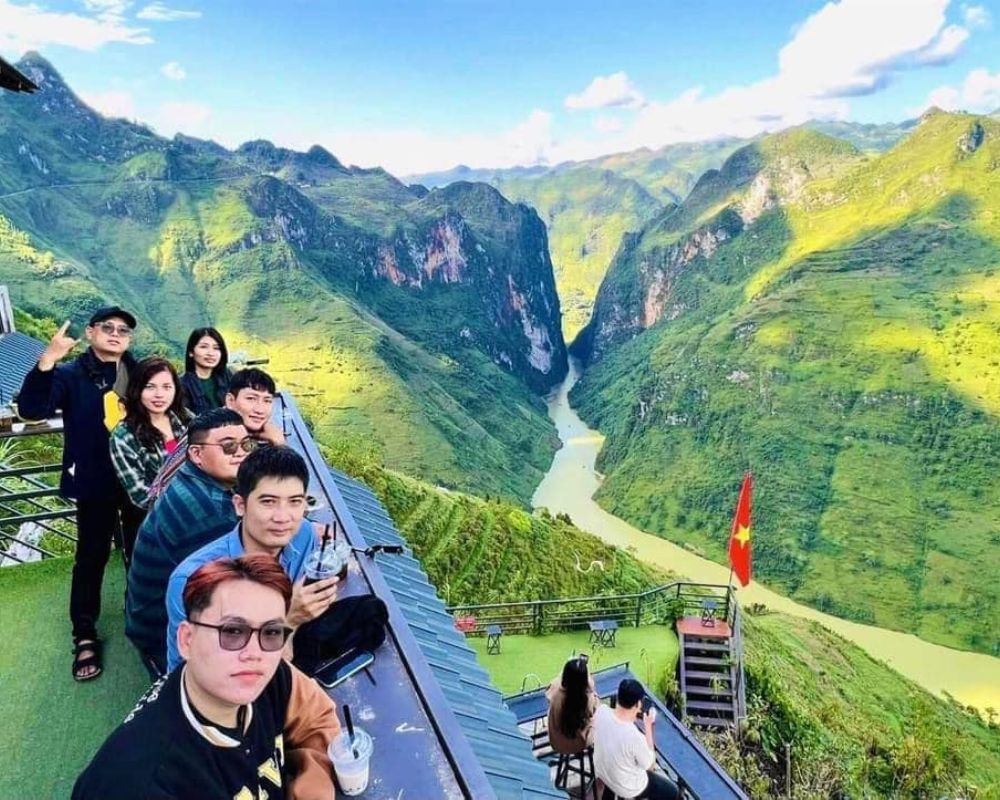 Travel to Ha Giang in spring
Travel to Ha Giang in springSummer in Ha Giang
With mild temperatures in the low to mid-20s in April, the city of Ha Giang is ideal for motorbike touring or trekking. When the sky is clear and blue, it's much simpler to appreciate the stunning scenery and take beautiful photographs.
Hotter and more intense temperatures often begin in May and June. During the day, the temperatures may rise to between 30 and 37 degrees. To safeguard your skin, pack your sunglasses, apply sunscreen, and don a long-sleeved shirt and pants.
But if you visit Ha Giang now, you may still get some very unique shots and have some unforgettable adventures.
The farmers have begun their work in the fields. The Hmong and the Dao cultivate maize in the highlands. The Tay people pump water down to their rice paddies in the lowlands. In June, the green hue of the crop blankets most areas.
Autumn in Ha Giang
The months of September and October are ideal for taking in the natural splendor of rice terraces.
The temperature and the rain both decrease somewhat, hovering somewhere between 25 and 30 degrees. It is suitable for sports such as motorbiking and trekking. If you go at this time of year, you will likely run across a lot of visitors from Vietnam.
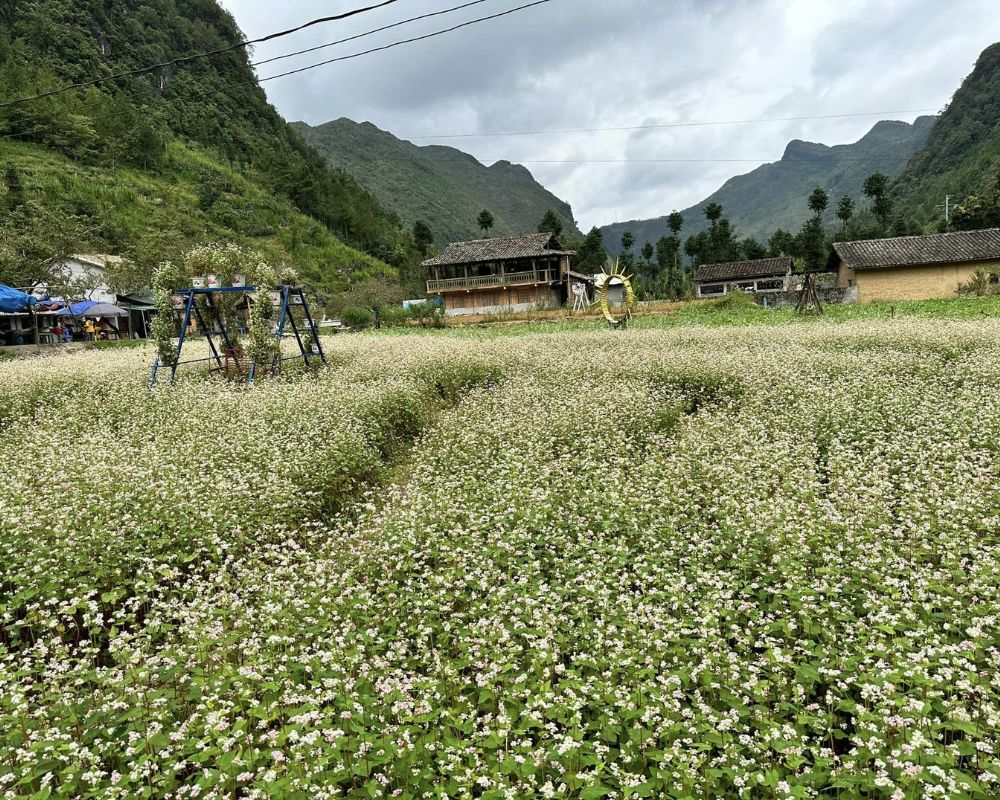 The beauty of Ha Giang in autumn
The beauty of Ha Giang in autumnWinter in Ha Giang
Buckwheat bloom season, which occurs solely in Ha Giang, begins in November and lasts until the end of the month. This flower was used by people in the past as a source of food. Now that visitors are able to appreciate the beauty of these humble blossoms, November tourism in Ha Giang is beginning to associate them with the city's name.
Additionally, the weather at this time is ideal for any activity you would choose to participate in. The sky is clear, there is less rain, there is no waterfall, and there is no land slice. You have the option to choose a 3-day or 4-day motorbike tour in Ha Giang depending on how much time you have available.
You also have the option to take a longer vacation to Trek around the stone country and delve more deeply into the local way of life and culture by going on a Trekking Ha Giang excursion that lasts either 3 or 5 days.
Keep in mind that during the month of December, in some areas of Ha Giang such as Dong Van and Meo Vac, which are situated at relatively high altitudes, it may snow or ice. There is a chance that the weather may be below 0 or 5 degrees, so remember to bring warm clothing.
Ha Giang Tourist Attractions
Ma Pi Leng Pass
From the district of Dong Van to the district of Meo Vac, which is about 20 kilometers away, going via the Ma Pi Leng Pass along the way. On the Happiness road that runs between Dong Van and Meo Vac is where you'll find Ma Pi Leng Pass. This is often regarded as the most picturesque route over the rocky plateau. The Ma Phi Leng Pass is one of the most treacherous routes in North Vietnam and has been given the nickname "King of the Passes in Vietnam." This pass has a length of up to 20 kilometers, is located at an elevation of 1200 meters above sea level, and is one of the highest points in Vietnam.
Lung Cu Flag Tower
It is generally agreed that the Lung Cu Flag Tower serves as the beginning point of Vietnam's North Pole. To get to the summit of the flagpole at the Lung Cu flag tower, one must climb a total of 140 spiral stairs in addition to the 389 steps that are spread out over a distance of 1.5 kilometers. You should not skip out on seeing this well-known tourist attraction in Ha Giang if you want your vacation to be ideal in every way.'
Vuong Family’s House
The Vuong house is a unique structure that has antique and exquisite architecture. It was constructed in 1914 for the monarch of the H'Mong, Vuong Chi Sinh, and his family.As a result of the fact that it was built at the same time by skilled local H'Mong craftsmen and Chinese engineers, the architecture of this home is a seamless fusion of the H'Mong and Chinese architectural traditions. When you pay a visit to Vuong's mansion, you may learn about how the H'Mong people lived in the past, both the wealthy and the poor, during a time when the happiness road had not yet been opened. You may also find yourself wondering how they managed to create such an incredible structure with such a large fortune.
Explore local markets of Ha Giang
Visitors who take part in the market will get a real sense of the life and character of the people who live here. Meetings are held in the Pho Cao Market on the day of the dragon and the day of the dog, at the Pho Bang Market on the day of the rat and the day of the horse, at the Sa Phin Market on the day of the snake and the day of the pig, and at the Lung Phin Market on the day of the tiger and the day of the monkey. Every market opens at the crack of dawn and is open until noon. In addition, the Dong Van market may be found on the site of the weekly Dong Van town meeting.
other
O Quy Ho Pass is one of the top 4 majestic passes in Vietnam. The pass is at over 2000m above sea level, bringing stunning views with surrounding beauty. If you come to Sapa, don't miss out on visiting O Quy Ho pass.
Fansipan Mountain is the highest mountain in Vietnam and in Indochina, located in the charming town of Sapa, offering a view of the majestic forests, large valleys and hill villages far away. If you want to embark this mountain by hiking or cable car, you will have an interesting experience in Fansipan. In this guide, we infor some information about Fansipan mountain for travelers. Let's explore it.
Lao Lao Chai, Sapa is an ethnic traditional village which is located in the northern part of Vietnam. This village attracts you at first sight and is one of the best spots to visit in Sapa town.
You will have the opportunity to learn more about Vietnamese ethnic groups as well as admire the peaceful and pristine scenery here with stunning terraced fields.
Visiting coffee shops in Sapa is the best thing to do that you must try. There are a few hundred virtual pictures on Instagram. You will have a chance to see the majestic natural scenery, cool climate and enjoy the delicious drinks at the best view cafe shop in Sapa. Spending the time to discover top 10 beautiful cafes in Sapa. Let's explore it.
Explore the nightlife in Sapa with the best bars in Sapa. This is a worthwhile and exciting experience in this Northwest area in Vietnam. There are many cool bars and pubs, attracting local and international tourists. You will relax and relieve all the stress and pressure during the day.

